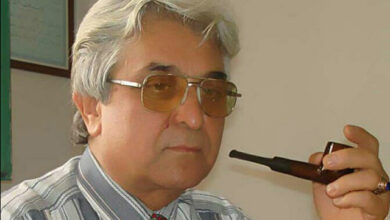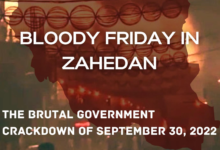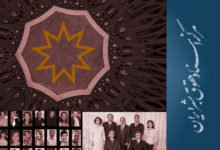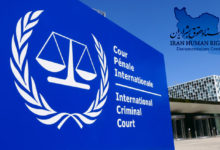A Darker Horizon: The Assassination of Shapour Bakhtiar
Source: http://www.pbs.org/wgbh/pages/frontline/tehranbureau/2011/08/a-darker-horizon-the-assassination-of-shapour-bakhtiar.html
by DAN GEIST
06 AUG 2011 15:11
PBS Frontline Tehran Bureau
On the 20th anniversary of the opposition leader’s murder, a comprehensive look at the details and the bigger picture.
[ feature ] Late on a Tuesday afternoon 20 years ago, Shapour Bakhtiar, 77, longtime advocate for Iranian democracy and the last prime minister before the Revolution, was assassinated in his home along the banks of the Seine in the west Paris suburb of Suresnes. His murder is a defining moment in the relationship between the Islamic Republic established by Ayatollah Ruhollah Khomeini in 1979 and those Iranians, both at home and abroad, who have opposed it over the past 32 years.
Bakhtiar was born in 1914 to the leading family of the Bakhtiari tribe of southwestern Iran. His maternal grandfather, Najaf Gholi Khan Samsam ol-Sataneh, twice served as prime minister during the Constitutional Revolution, in 1912 and again in 1918. In 1934, after receiving his diploma from a French high school in Beirut, Bakhtiar had just arrived in Marseille to pursue his studies when he learned that his father, the Bakhtiari chieftain, had been executed on the order of Reza Shah. He returned to Iran for two years before heading to Paris, where he studied law, philosophy, political science, and economics. In 1940, he volunteered for the regular French army, rather than the Foreign Legion. After the Nazi takeover, he reportedly fought with the Résistance and came to idolize General Charles de Gaulle, leader of the Free French Forces.
Following the end of World War II, he attained his Ph.D. in political science from the Sorbonne and returned to Iran. He was appointed to head the Labor Departments in the provinces of Isfahan and then Khuzestan, center of the Iranian oil industry. In 1949 he joined the social-democratic, middle-class-oriented Iran Party, and was soon chosen to lead its youth organization. After Mohammad Mosaddegh was elected prime minister in 1951, Bakhtiar relocated to Tehran to serve as deputy labor minister in the new democratic government. He held the post until the CIA-sponsored coup in 1953 that overthrew the popular Mosaddegh (seen here in the photograph next to Bakhtiar) and restored Mohammad Reza Shah Pahlavi, Reza Shah’s son, to the Peacock Throne. Invited to join the government of the Shah’s handpicked prime minister, General Fazlollah Zahedi — Bakhtiar’s cousin Soraya Esfandiari was then married to the Shah — by one account he sent a message saying, “Go tell your boss that I worked in Mosaddegh’s government. I am not a piece of clothing to be dragged everywhere. I will not work for a coup d’état government.”
By the early 1960s, Bakhtiar was a force in both the Iran Party and the opposition National Front coalition of which it was the largest constituent. Abbas Milani describes his distinctive character as a politician: “Of all the leaders of the National Front, he was particularly prominent for his uncanny combination of feisty, sometimes reckless militancy, and a Machiavellian pragmatism that preferred tactical flexibility to ideological purity…. Of all the leaders of the National Front, [he] was the most vocal and unabashed in defense of secular democracy and in his willingness to criticize the clergy openly. From the cracking of clergy’s sandals, he famously said, he heard the sounds of fascism.”
On June 12, 1977, with fellow veteran National Front leaders Karim Sanjabi and Dariush Forouhar, Bakhtiar released an open letter to the Shah demanding an end to “despotism in the guise of monarchy” and the restoration of Iranians’ rights as mandated by both the nation’s Constitution and the Universal Declaration of Human Rights. While this was one of the sparks that ignited the Revolution, Bakhtiar maintained a relatively moderate position as popular opposition to the monarch grew increasingly fervent: he advocated permitting the Shah to remain nominal head of state until a plebiscite was held on what form the country’s government should take. He opposed the decision of other pro-democracy figures during 1978 to publicly align with Khomeini, the paramount religious figure in the opposition, at that point in exile just west of Paris.
In late December 1978, in a last, desperate attempt to forestall the establishment of an Islamic regime, the Shah asked Bakhtiar to form a government, though the latter had made his acceptance conditional on the king’s agreement to leave the country. Despite the many steps the new premier swiftly took to restore political and civil rights to Iran’s citizens and the Shah’s departure for Egypt, the effort failed. Bakhtiar was forced out of office a week and a half after Khomeini’s return to Iran. Having served as prime minister-designate and prime minister for a total of just 38 days, Bakhtiar went into hiding; by midyear, he too had left the country.
Upon his arrival in the West, he became a leader in the exile opposition to Iran’s new Islamic government. After a failed attempt on his life in 1980, Bakhtiar moved from the apartment building where he had been living in another Parisian suburb to the large Suresnes residence. There he was constantly surrounded by a sizable detachment of French state police, with guards stationed around the hillside grounds, manning a metal detector at the front door, and positioned in the foyer of the three-story house. Nevertheless, on August 6, 1991, three Iranian men — one well known to Bakhtiar — were able to enter his home, kill him and his secretary, and depart without raising any suspicion. French investigators would later allege that two of those men were tied directly to the Islamic Republic’s Ministry of Intelligence and National Security, known as VEVAK; they would also implicate a range of other Iranian government institutions in the assassination conspiracy.
The main sources for the following narrative of the killing of Shapour Bakhtiar and its investigation are “The Tehran Connection,” by Thomas Sanction, Nomi Morris, Elaine Shannon, and Kenneth R. Timmerman (Time, March 21, 1994); “Tale of Deadly Iranian Network Woven in Paris,” by William C. Rempel with Ronald J. Ostrow and Sarah White (Los Angeles Times, November 3, 1994); and No Safe Haven: Iran’s Global Assassination Campaign (Iran Human Rights Documentation Center, May 2008). Details concerning the first assassination attempt on Bakhtiar come primarily from No Safe Haven and various articles at Omid: A Memorial in Defense of Human Rights in Iran. Among the many sources for the significantly related events also included in the timeline, especially the fall of the Bakhtiar government and the assassinations of other opponents of the Islamic Republic’s regime outside Iranian borders, most important are “The Ten Days That Changed Iran” (Tehran Bureau, February 3, 2010) and “The Chain Murders: Killing Dissidents and Intellectuals, 1988-1998” (Tehran Bureau, December 14, 2009; updated and expanded, January 5, 2011), both by Muhammad Sahimi. The accounting of those foreign assassinations below is partial; according to Time’s 1994 tally, more than 60 opponents of the regime were murdered around the globe during the first decade and a half of the Islamic Republic’s rule.









